|
|
SOME NOTES ABOUT TALL SHIP
MODEL QUALITY
Acquiring a tall ship
model seems to be easy. Just Google the phrase "tall
ship models" and a dozen sites immediately appear. Even
the commodity-goods seller Amazon claims a prominent
spot. Many people, however, find this profusion a
problem. Given so many choices, one might get confused,
tired, and then choose the one who appears to be
'consumer friendly' and (faultily) promises 'museum
quality.' But please be mindful of what you are picking
as a model's questionable accuracy and mediocre
quality will show when it is in front of you, and
when your guests ask embarrassing questions like "do real tall ships look this
pristine?",
"how come this
Vasa has its middle mast not parallel with the other
two masts?", "the gunport covers are black metal?"...
When you search for a tall
ship model, look into large close-up
photos that zoom in small quarters of the
models. Inaccurate models usually have very
short bowsprits (to make the box smaller for shipping convenience), bad boats on deck, thick
cloth sails, simplified rigging, and very thin base...
These models usually have their ships' flags fly opposite to
wind direction (For tall ships, wind blows from aft.) Some retailers claim to be "widely
recognized leader in handmade tall ships"
and "museum quality" but painted his ships like plastic
toys and rig them with bright white rope.
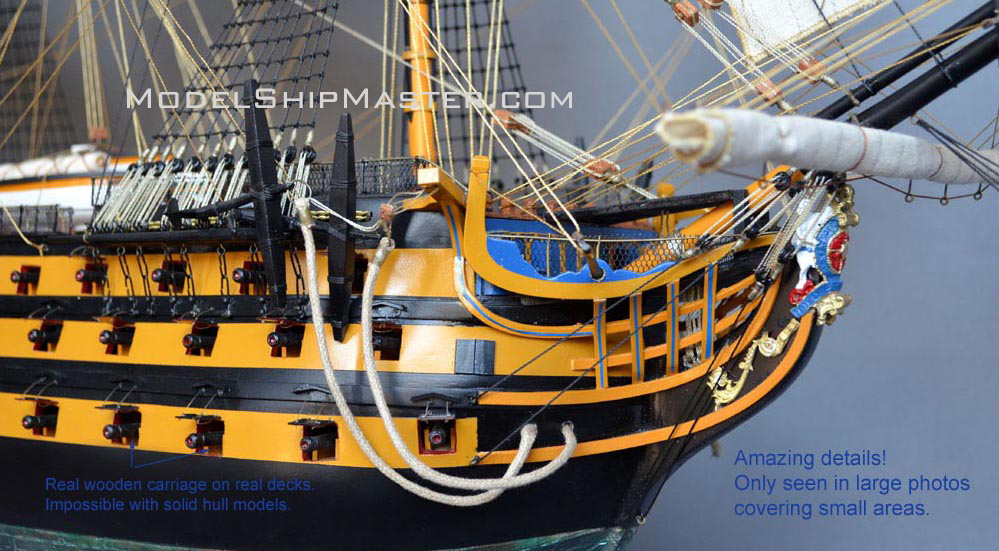
Some model makers discuss
a great deal about their ships' quality but never
support their statements with photos. We encourage you to ask for
confirmation. If the hull is claimed to be
plank-on-bulkhead, ask if that is true or
it is solid
wood block with veneer planks on the outside. Another
question is if the small boats are wooden, built by hand
or plastic casting. The photos below have stunned many.
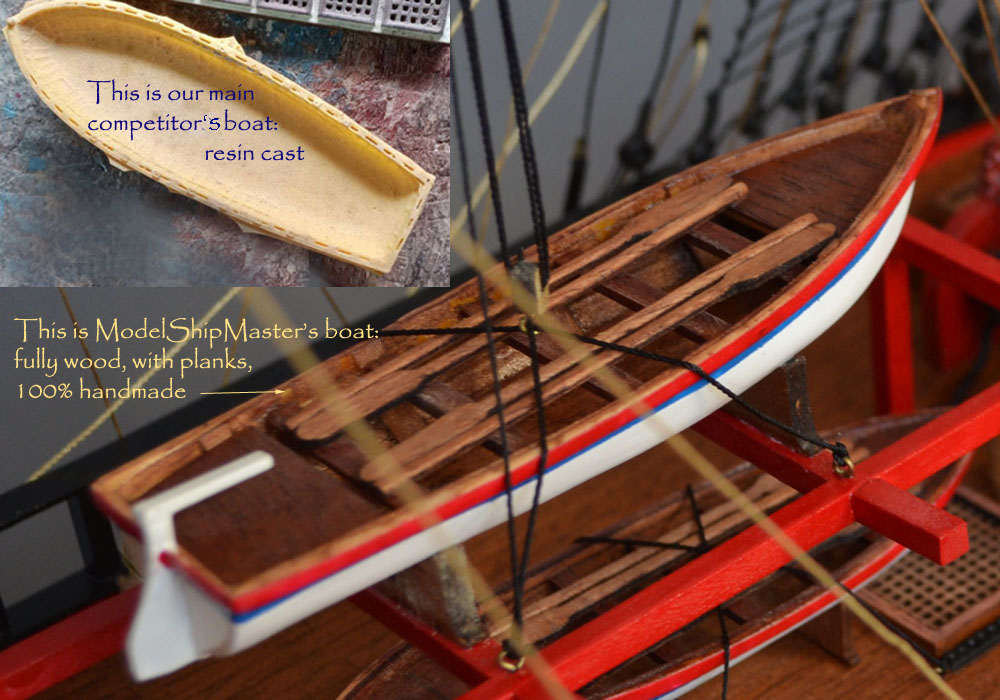
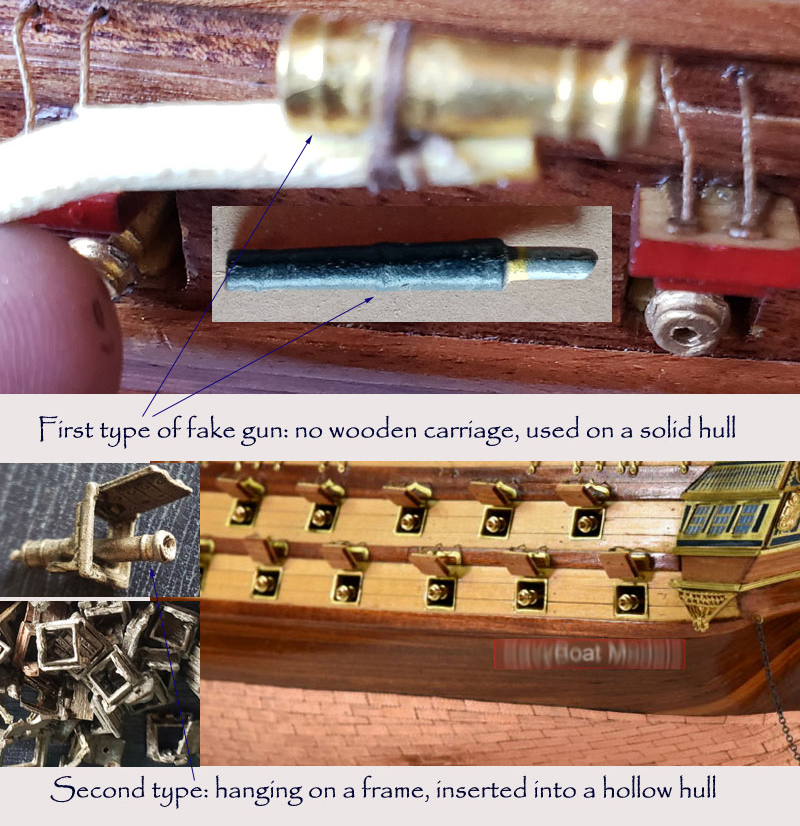
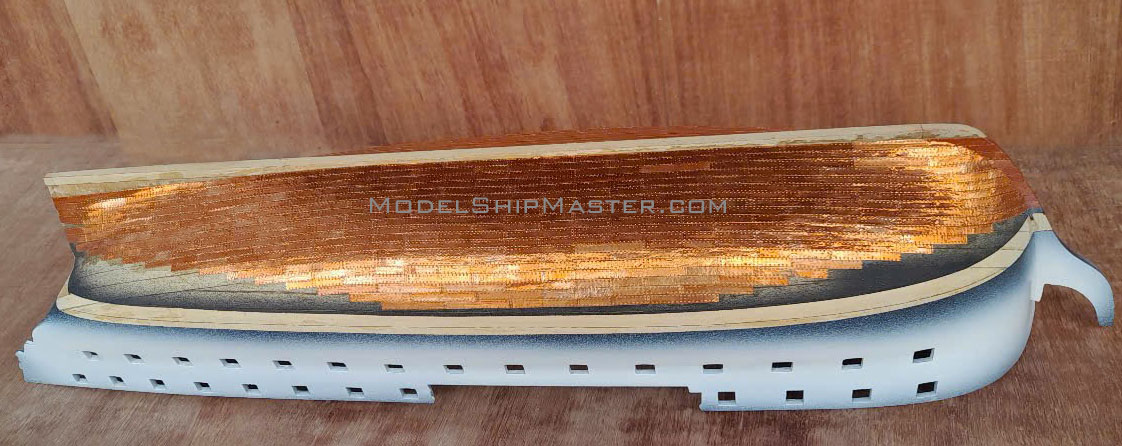
One important feature in
tall ships is the rigging system. Countless sellers, if
not all, simplify their ships' rigging. This includes
the one whose tall ships are >$6,000 apiece. Low-end makers
not only cut labor costs by using humongous deadeyes and
blocks but also cut shipping expenses by cutting
bowsprits and masts ridiculously short.
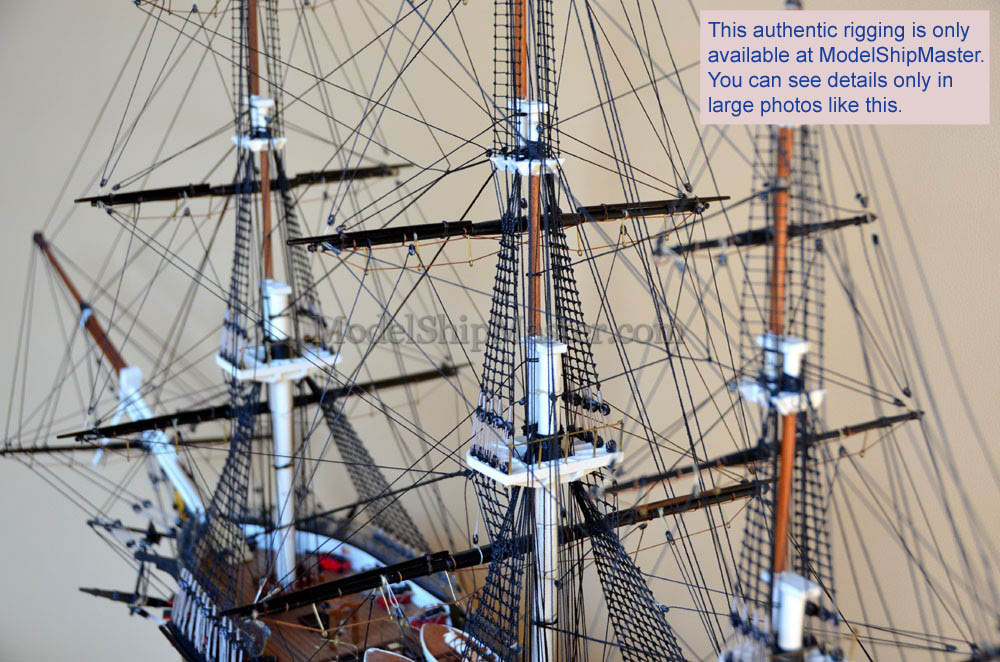
Tall ships are difficult
to make not only in their complex rigging but also realism
appearance. One needs artistic skills
to make a tall ship look tough. That's why the
makers who are accustomed with painted products such as
warship models won't be able to convey tall ship
art. Their tall ships look shiny and pristine like
toys.
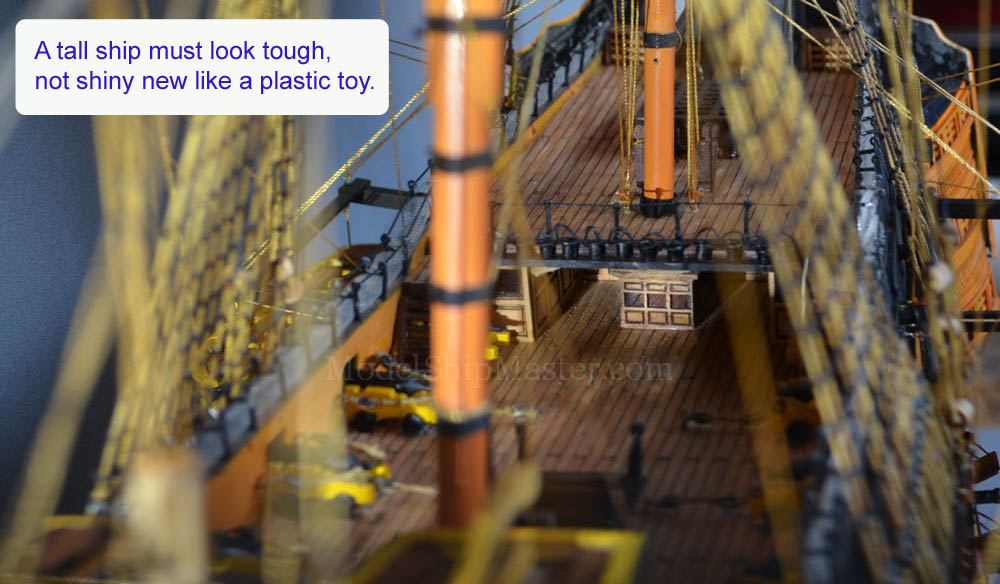
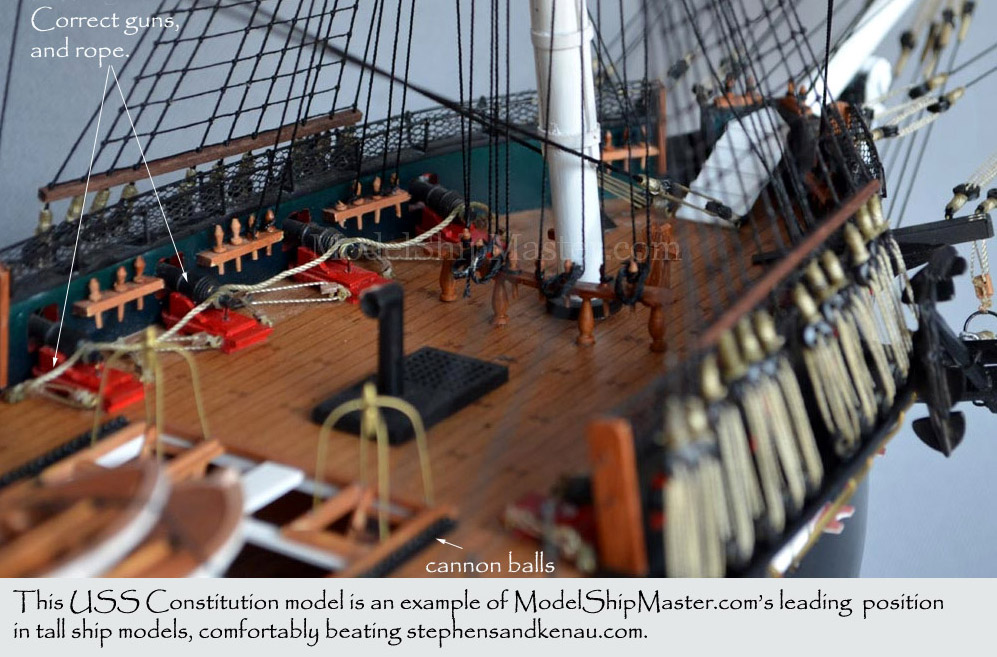
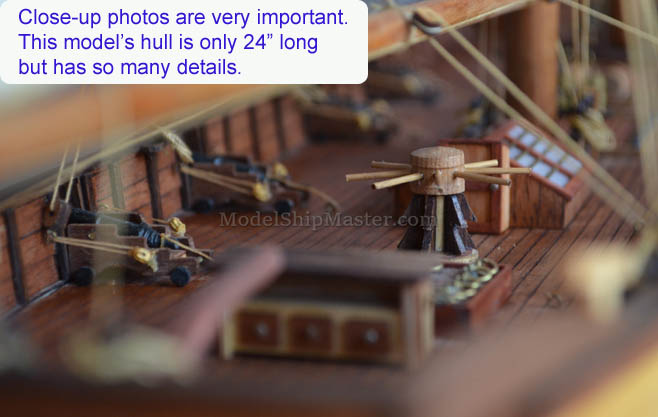 |
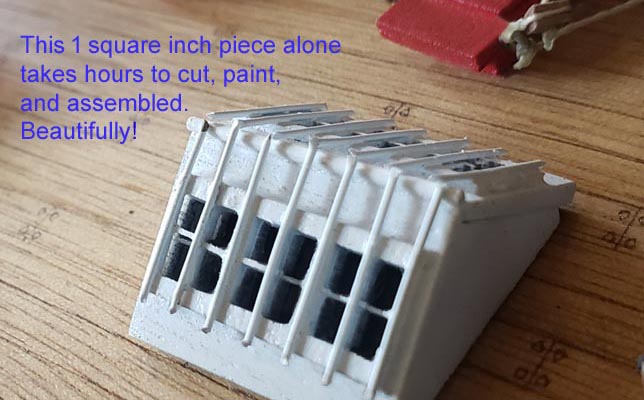 |
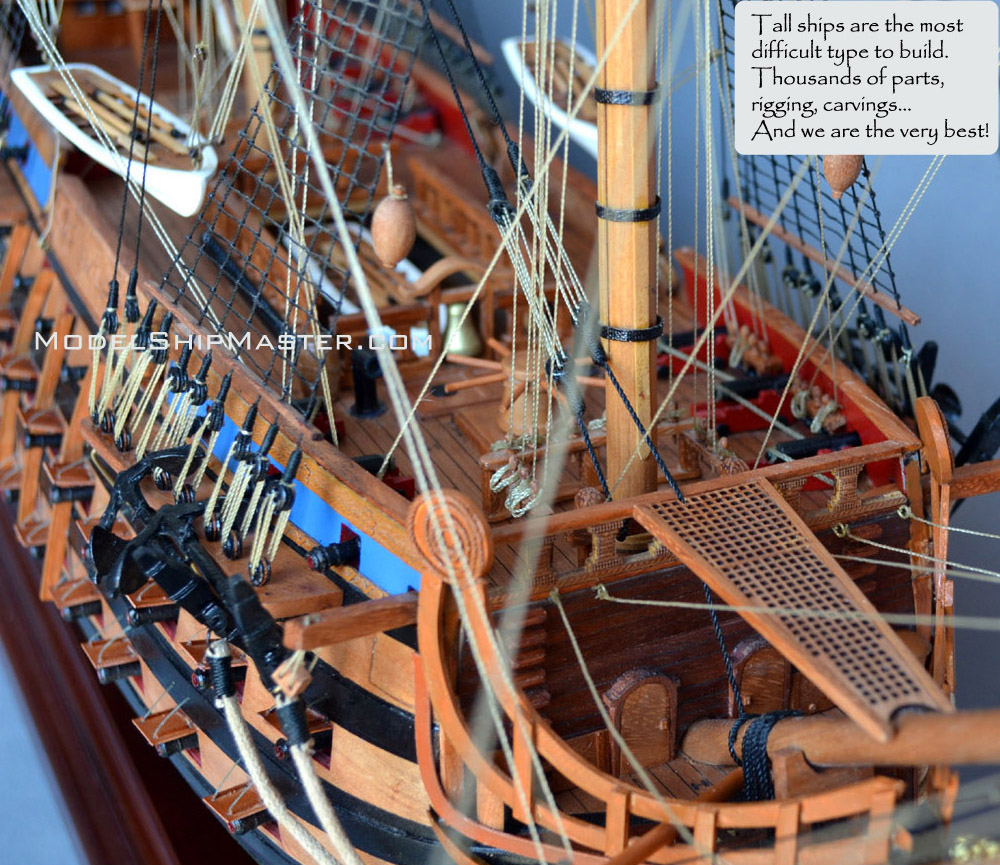
"My darling wife
loves the tall ship models once she sees them, but she is much
more practical than I am, at least in the short term, so
she doesn't buy for the future...if there is no space
for something now, she says "why buy it.
I, however, am much more future oriented, and very aware
of the fact that items of high quality but limited
appeal to the general public may not be available in the
future....books that aren't on the best seller list,
classical music recordings, etc. There is always a niche
market for high quality items, but it frequently becomes
very expensive. Unfortunately, we live in a culture
where it is nearly impossible to go broke making
mediocre movies or producing annoying and cloned rap
music, but quality, if not priced "competitively",
frequently becomes extinct, in the mass market
sense...try finding a a good quality toaster or other
small appliance at any price.
I fully plan on unveiling all of the acquisitions when
we have more space, I hope, in a few years, assuming I
don't prematurely expire ( I am 63, but in much better
shape than most my age... I should know, I'm a physician).
Interestingly enough, my wife inquired today as to
whether a friend of hers could bring her grandchildren
over to see my ship models, as they seem to have a
fascination for sailing ships (probably watched Johnny Depp in Pirates of the Caribbean too many times), so I
would say that's a positive sign.
Anyway, as usual, I have probably communicated more than
you wish to hear.
Keep the colors flying and thanks to all your artisans
for their greatly appreciated efforts. Scott B."
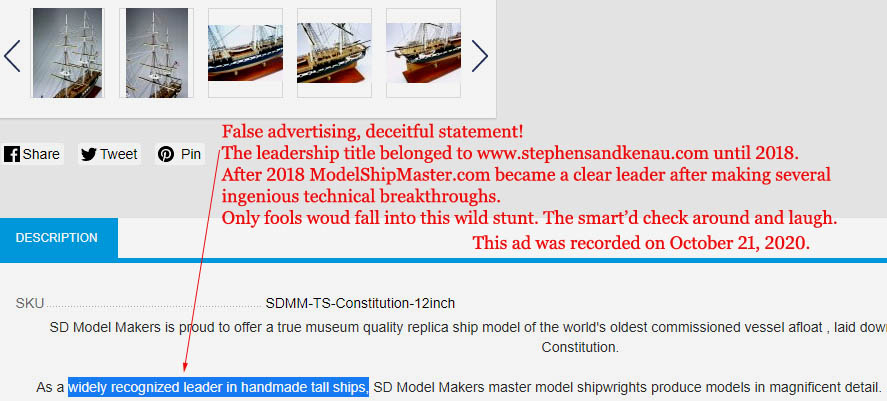

Building a decent tall ship model requires experience,
meticulosity, and
an unwavering pursuit for authenticity. Anyone can cite
a long list of books but books
are only great in the hands of honest craftsmen who
don't skip the difficult parts. A model ship can be
an eye magnet for years to come or a boring
decorative accessory in a short time. We hope that
the info above could help you distinguish
between the bad, the mediocre, and the premium.
If something is not very
clear, please feel free to send us
an
email at
Services@ModelShipMaster.com. We look forward to building a
spectacular model for you.
About Us
Why Us
Guarantee
Inquiry
|